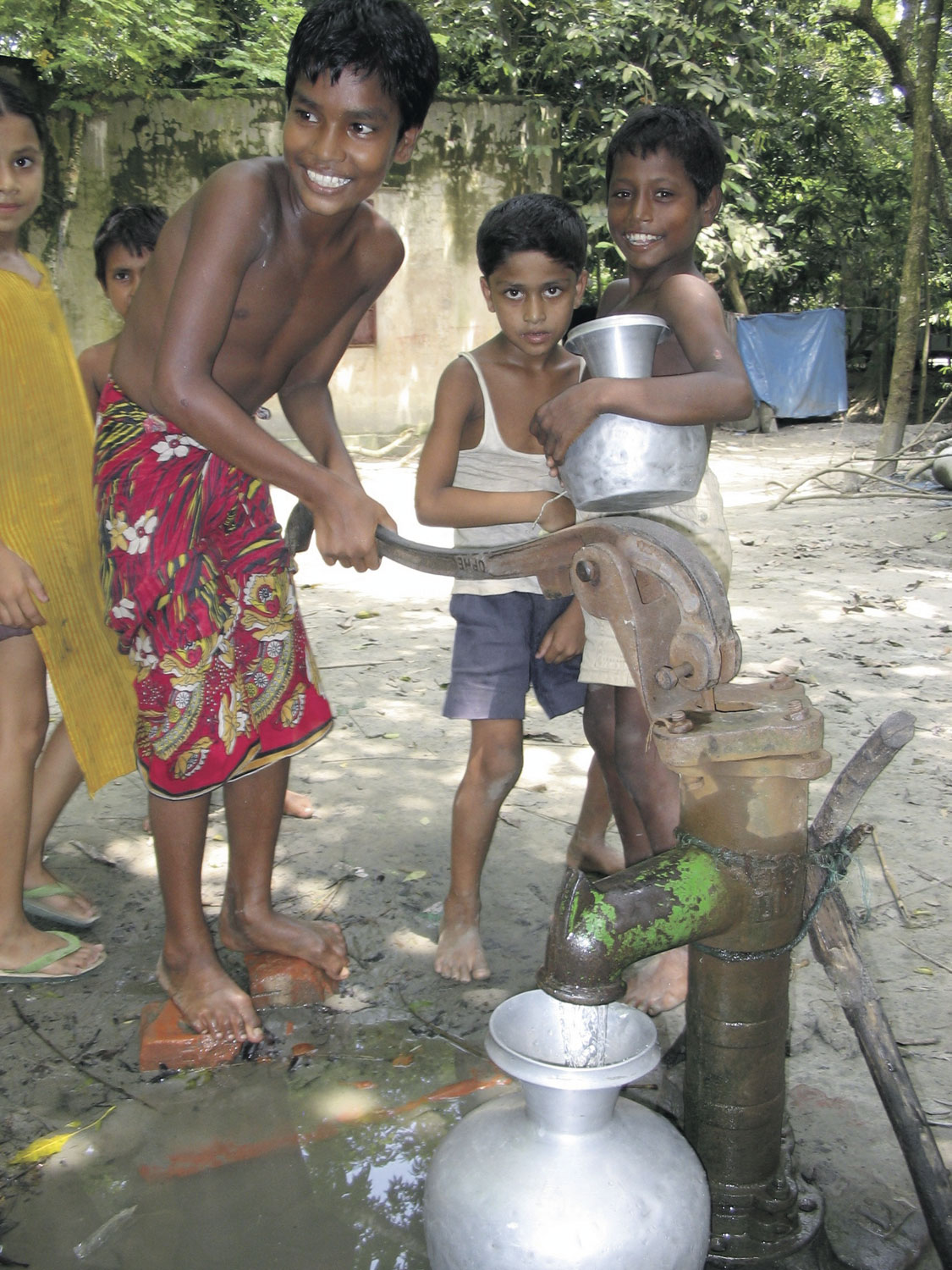In Bangladesh millions of wells are contaminated with arsenic. Doris van Halem, of the faculty of Civil Engineering & Geosciences, tried to solve this problem using a bicycle pump and aquarium pump.
Millions of wells were installed in Bangladesh during the last few decades. Clean groundwater for everyone would mark an end to the high death toll caused by contagious diseases spread by unsafe surface water, or so Bangladesh’s department of public health engineering reasoned. It indeed helped, yet sadly people now suffer from arsenic poisoning.
In the Netherlands, the ground and groundwater contain an unwanted chemical, too, which – although it won’t kill you (just ruin your laundry) – behaves in some other respects just like arsenic. That chemical is iron. Some drinking water companies remove it by pumping oxygen rich water into the ground. By doing so, the adsorbed iron around the well gets oxidized. This oxidization process turns the ground into a filter. When the flow direction is reversed during groundwater abstraction, the dissolved iron in the groundwater binds to the oxidized iron, and so too does arsenic.
With this technology in mind, Doris van Halem went to Bangladesh in 2008. Over the course of one year, she tested the technique at two locations. At first it seemed like the silver bullet. “You don’t need any chemicals or expensive equipment,” says Van Halem, who will defend her thesis next week. “All you have to do is pump up water from the well, aerate it in a tank using, for instance, a bicycle pump or aquarium pump, and then you let the water seep into the well again.”
But the problem turned out to be persistent. Phosphate, which is around in much higher concentrations, also binds to oxidized iron, leaving hardly any binding sites left for arsenic.
“Back in the laboratory we found that the technology can work when the Ph is high and the concentration of phosphate low,” Van Halem explains. “These ideal circumstances do exist in Bangladesh, so it’s worth continuing the research.”
The problem in Bangladesh however is that the water supply system is decentralized: every family has its own well. A more centralized approach would be better, the researcher believes, as more effort and money could be spent on finding the right locations.
Wie dacht dat studenten werktuigbouwkunde alleen maar hightech apparaten maken, zoals robotvogels en snelle racewagentjes, komt bedrogen uit. Deze eerstejaars studenten veranderden een gewone schroevendraaier in een soort handaangedreven boor, maar dan wel een met schroefpunt. Een wedstrijdje schroefdraaien in hout wees uit wie het beste ontwerp had gemaakt.



Comments are closed.